7 Modern Exterior Cladding Ideas for a Home Makeover
By
Steve Getsiv,
11/01/23
7 Modern Cladding Possibilities to Boost Your Home's Exterior
In the realm of architecture and design, cladding, also known as siding, plays a pivotal role in enhancing the appearance, performance, and durability of a structure. Today, cladding options have evolved significantly, with modern options that include a blend of functional benefits and aesthetic appeal. From metal panels, fiber cement siding, vinyl, concrete, to the likes of stone, brick and wood, the choices are diverse.
Batu Rainscreen
However, not all cladding options are created equal. Wood, one of the oldest cladding materials, often gets an undeserved reputation for being high-maintenance. This article will debunk these misconceptions and shed light on the inherent strengths and enduring beauty of modern wood cladding exteriors.
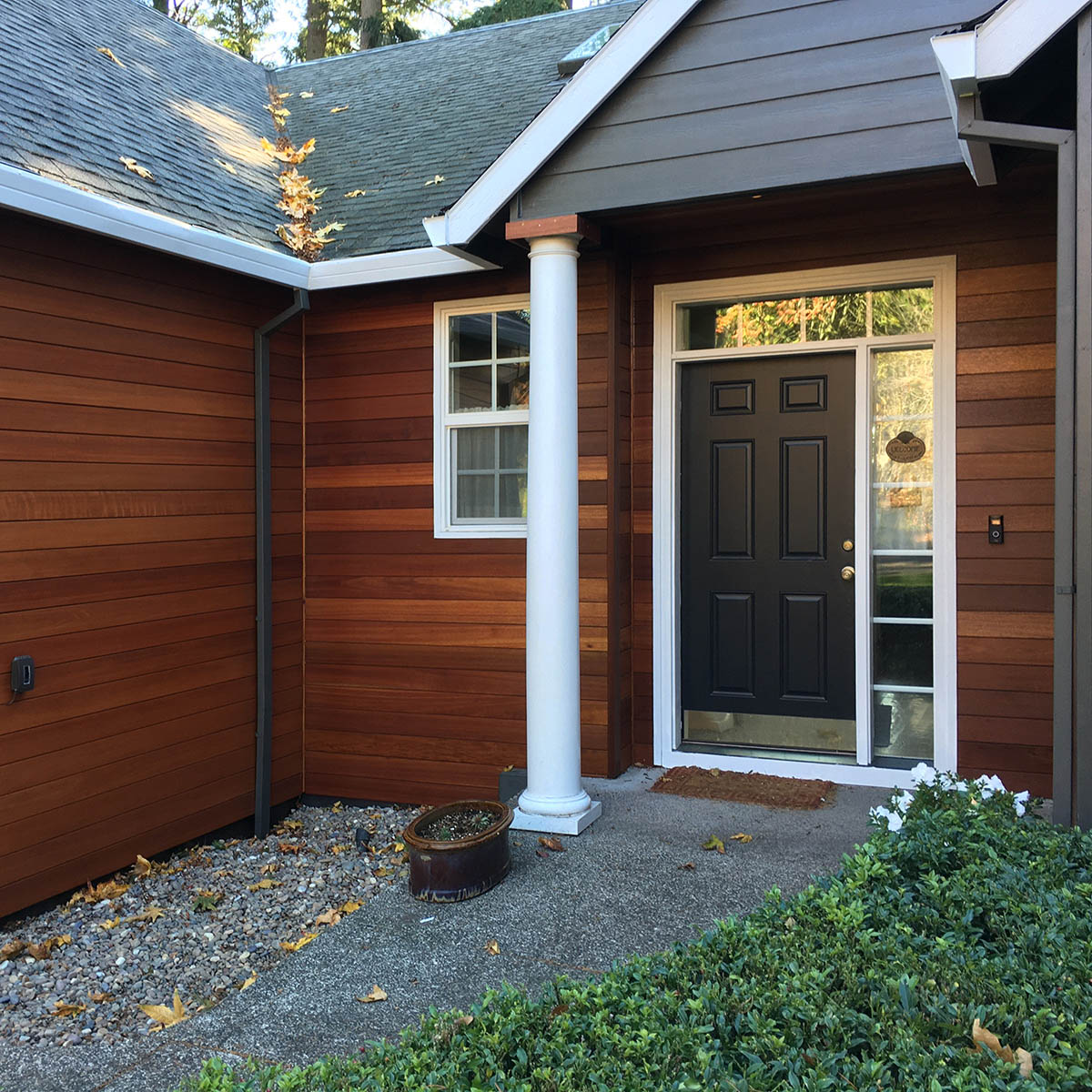
What is Exterior Cladding?
Exterior cladding, often referred to as siding, is the outermost layer of a building that serves as a skin or protective covering against wind, water, and temperature changes. It significantly adds to the aesthetic appeal of the building, and allows architects and builders to shape the building's architectural character.
Modern Cladding Options
While it comes in various materials, modern exterior cladding often blends functionality with design sophistication. Here are some options available in today's market:
1. Metal Panels
The sleek finish of metal panels offer a modern edge to buildings. Reflecting a minimalist's dream, they are often chosen for their durability and easy maintenance.
2. Fiber Cement Panels/Siding
Next is sturdy fiber cement panels. They can mimic the appearance of wood or stone, and deliver durability without compromising on aesthetics. They are non-flammable which adds an element of safety.
3. Vinyl
Vinyl cladding is celebrated for its versatility. Lightweight, durable, and available in a myriad of colors and textures, it's a go-to for homeowners who want a cost-effective solution without skimping on style.
4. Concrete
Concrete cladding is the epitome of modern minimalism. Its stark, smooth surfaces resonate with an industrial charm, to help ensure durability while also making a bold design statement.
5. Stone
Stone cladding bridges the age-old with the new. Evoking timeless elegance, it's a choice that lends both texture and a sense of permanence to a building's facade.
6. Brick
Brick cladding is synonymous with classic design. Its rich, earthy tones and tactile appeal have graced homes for centuries, and in modern settings, it adds a touch of nostalgic warmth.
7. Wood Cladding: The Timeless Choice
When speaking of cladding, one cannot sidestep the topic of wood. Some critics argue about the downsides of wood, citing maintenance and durability concerns. Let's unpack those concerns and dive into why, with the right choice and proper care, wood remains unparalleled in its allure.
Busting the Myths: Downsides of Wood
Wood, like all materials, has its vulnerabilities. Exposure to elements, potential for rot, and susceptibility to pests are concerns, but with today's advancements, these issues have practical solutions.
Wood siding is available in both softwood and hardwood, and in grades from solid tight knot ("STK") up to "Clear", which is virtually defect-free grade without knots, pitch or bark pockets, or other visual defects.
STK softwoods are typically referred to as paint grade and are typically not finished with transparent or semi-transparent stains. Even with heavy paint, knots can still "telescope" through the paint and develop cracks and splits over time. Solid tight knot grades can sometimes be limited to ingrown knots without any checks, splits or black rings around the knot; these knots are also referred to as "live knots".
Clear softwoods such as Western Red Cedar and Redwood have become prohibitively expensive at prices often exceeding $15-20 per square foot of coverage. Availability has also become challenging since most of these clear softwoods generally come from the West coast of the U.S. and Canada. Less expensive options such as Douglas Fir, Hemlock and Pine are available in clear grades as well but these softwoods are not as naturally durable as Cedar or Redwood.
Thermal modification is one technique used to increase the natural durability of both softwoods and hardwoods. Thermal modification is typically done only on lower density woods such as Hemlock, Obeche or Ayous, European Pine, and Spruce. But thermal modification adds significant cost to the raw material, roughly 25-30% of the raw material going into the process.
Premium hardwood species, along with advanced treatments, coatings, and installation methods like rainscreen systems, have significantly enhanced the durability and longevity of wood.
Consider these advantages:
Sustainability: Hardwood is naturally abundant and responsibly harvested in order to allow for more growth than removal.
Biodegradable: It's environmentally friendly, unlike concrete or PVC and composite decking.
Energy Saver: Hardwoods require less energy to produce compared to aluminum, brick, concrete, and steel.
Sequesters Carbon: Unlike aluminum, brick, concrete, and steel that produce and release carbon, hardwood actually sequesters it.
The Visual Appeal and Conventional Elegance of Wood Siding
Wood cladding is undoubtedly a timeless feature in architectural design. Its appeal lies not only in its natural beauty, but also in the warmth and charm it imparts to any exterior.
Each piece of wood carries a unique grain and texture that helps to make every wooden facade distinctive and rich in character. Despite the influx of new materials, the classic appeal of wood remains unrivaled.
Selecting the Ideal Wood Species for Cladding
Not all woods are created equal. Some species are innately more resistant to the challenges posed by external elements. Companies like Nova USA Wood have a curated selection of wood species optimized for exterior cladding including:
Batu, Red Balau
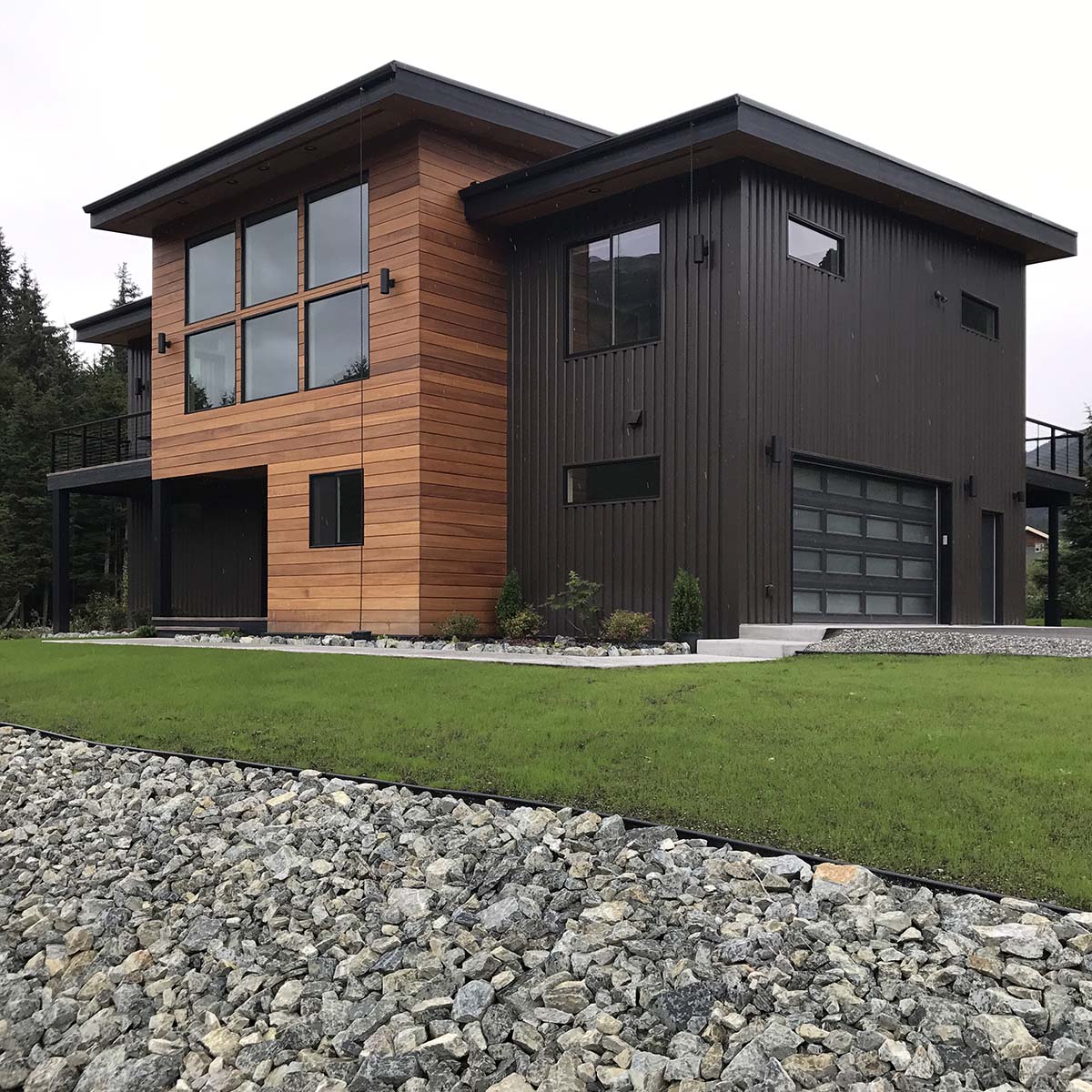 Batu Rainscreen
Batu Rainscreen
Batu, also commonly referred to as Red Balau, is a hardwood that is native to Southeast Asia. Renowned for its rich, reddish-brown hue, this wood boasts not only of its striking beauty, but also of its commendable durability.
Ipe, Brazilian Walnut
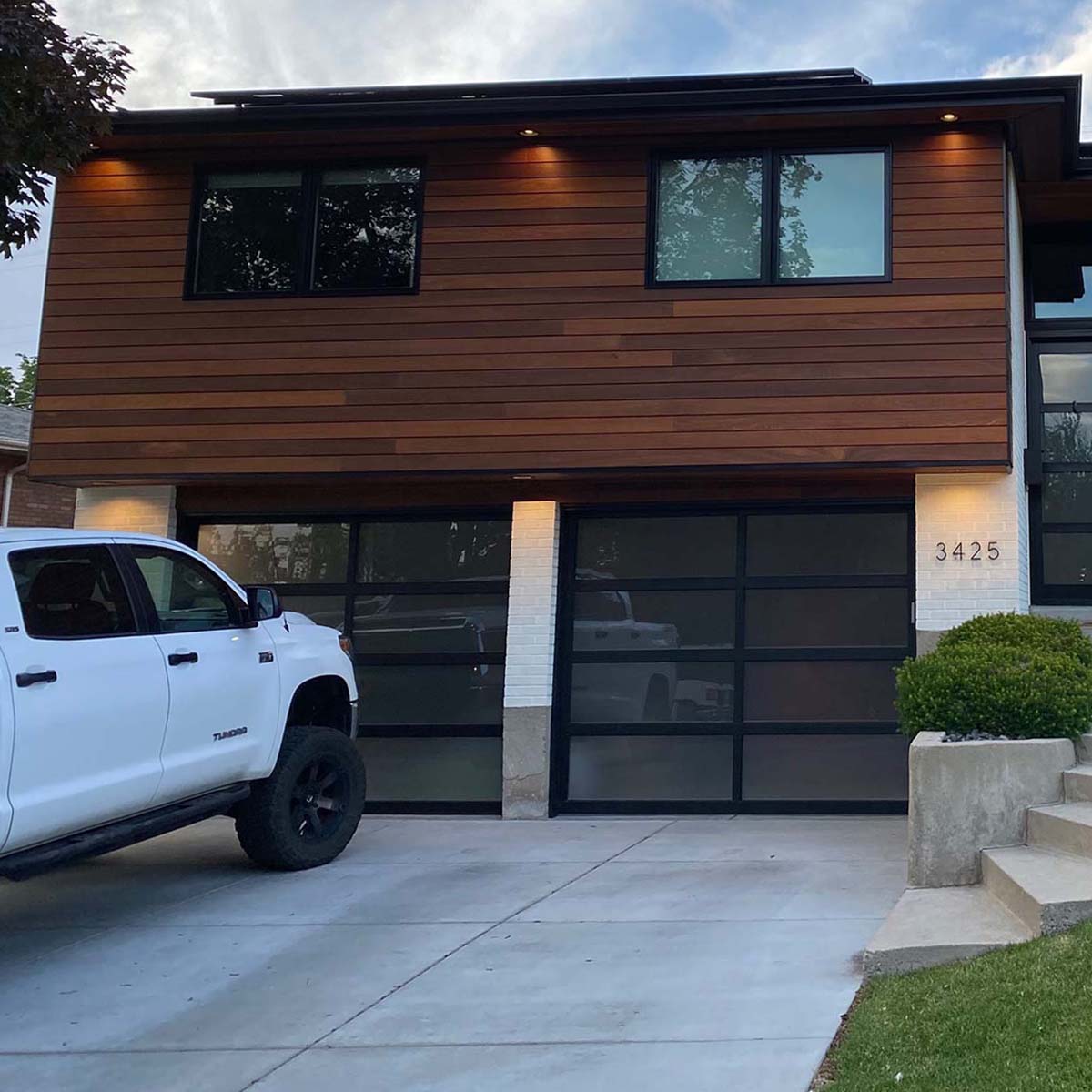 Ipe Rainscreen
Ipe Rainscreen
Often dubbed as "Brazilian Walnut," Ipe is a coveted hardwood from the forests of Central and South America. With a striking palette that varies from rich browns to reddish hues, Ipe is as visually enchanting as it is robust.
Cumaru, Brazilian Teak
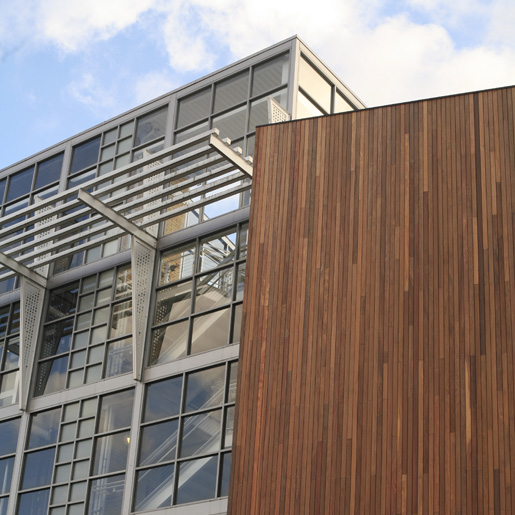 Cumaru Decking
Cumaru Decking
Originating from the tropical regions of Central and South America, Cumaru is often referred to as "Brazilian Teak." It is a hardwood that is recognized for its spectrum of colors ranging from honey-brown to reddish-brown, and sometimes even features beautiful golden tones.
Bangkirai, Yellow Balau
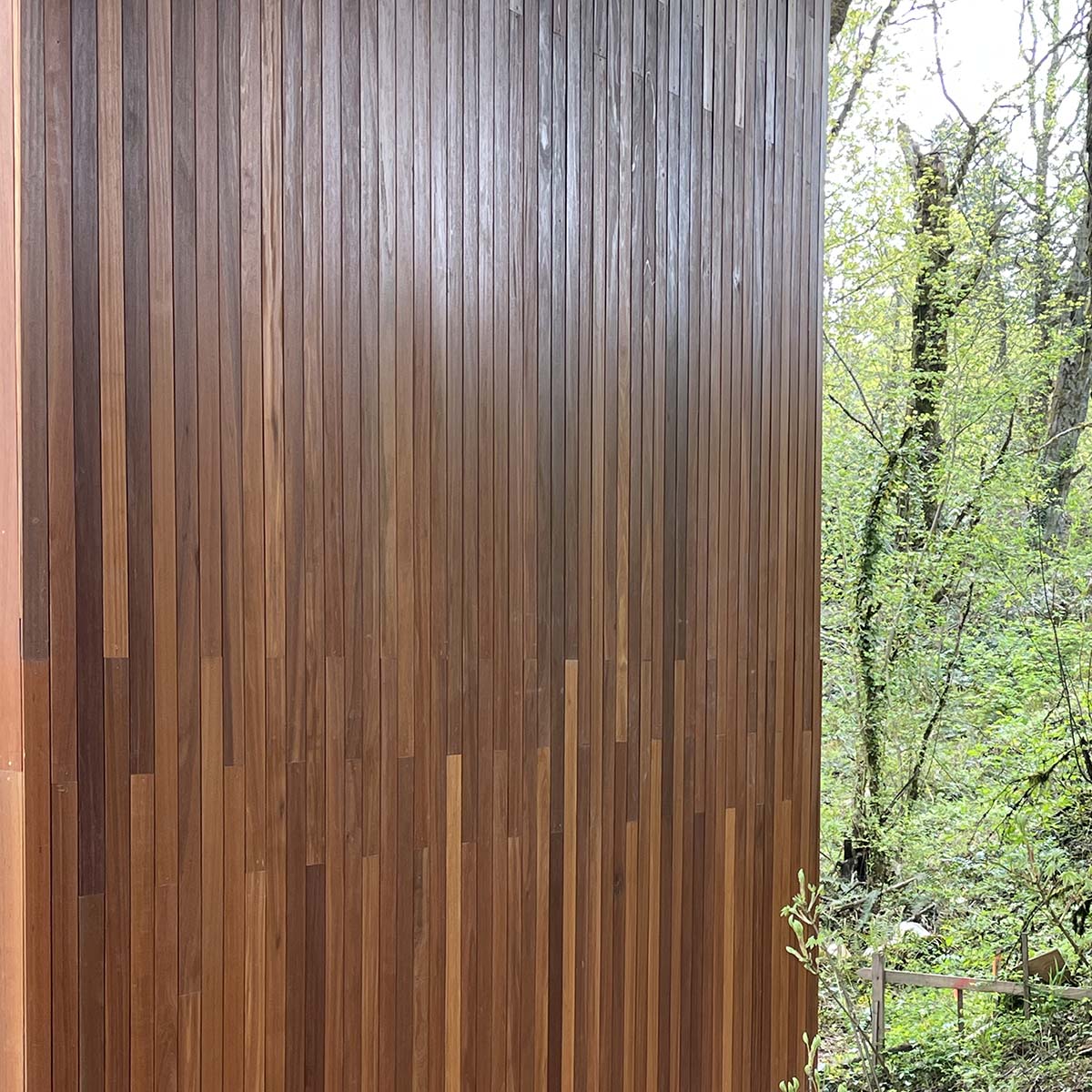
Bangkirai, also known as Yellow Balau, is a naturally durable species that compares favorably with Ipe in almost every aspect other than price. Bangkirai is approximately 20-30% less expensive than Ipe! The Interlocking grain of Bangkirai provides a smooth, even texture, and ensures a long maintenance-free, service life.
Modern Installation Techniques for Exterior Wood Cladding
Modern wood cladding solutions take advantage of updated installation techniques.
Rainscreen systems, for example, allow for an air gap between the cladding and the underlying structure in order to promote ventilation, minimize moisture build-up and to help extend the life of the wood. And rainscreen systems are vastly superior in terms of thermal efficiency and insulation because of the air gap between the exterior cladding and the structure.

RAINA is the industry association for the promotion of rainscreen design and construction. Rainscreen siding systems are a very popular trend with architects and designers because of their efficiency. RAINA is the leading authority on rainscreen systems and they work to promote across all segments of the industry, assisting with technical and marketing data, promoting education and training, and developing standards to guide and govern rainscreen systems. rainscreenassociation.org
Nova ExoClad QuickClip Rainscreen Siding System
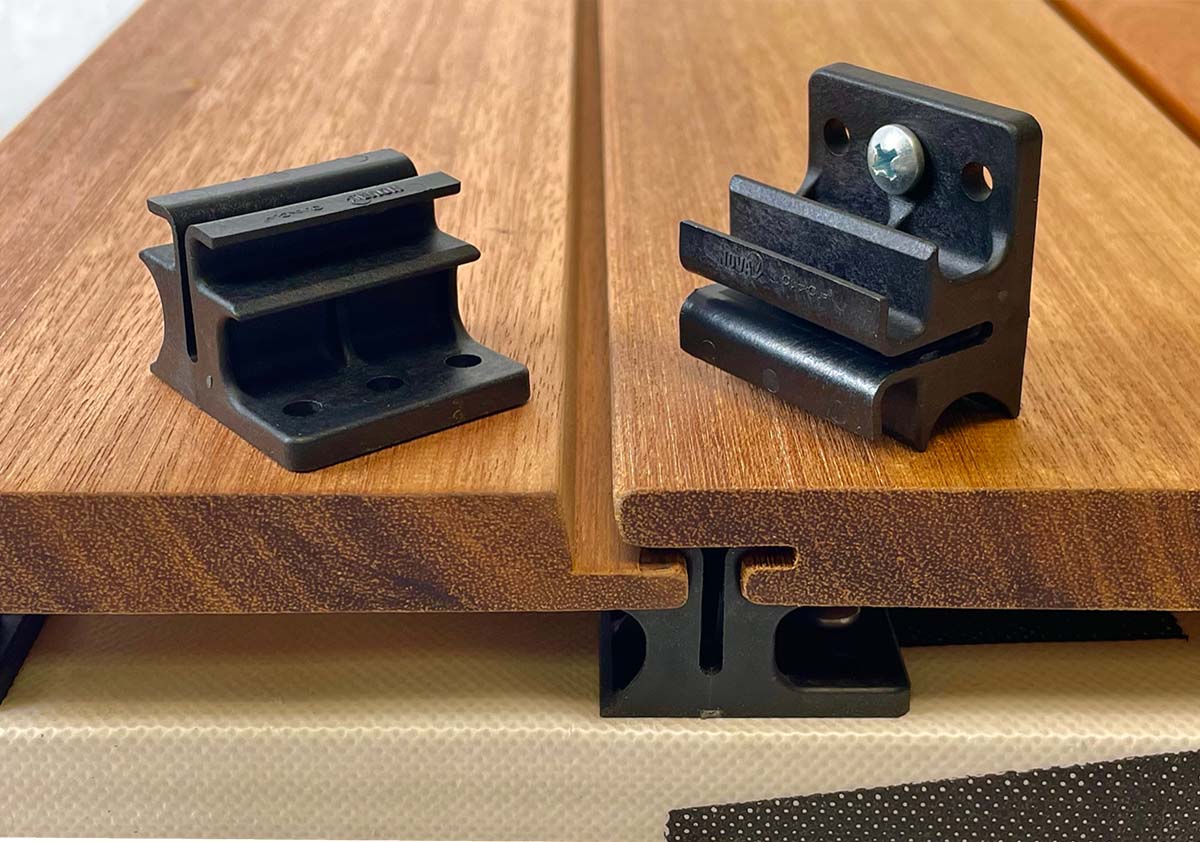
The Rainscreen siding system by Nova is an exclusive and patented clip system that enables the natural expansion and contraction of wood. This hidden fastener system produces an air gap between the siding material and the structure itself.
The air gap usually measures around 3/4" and provides several advantages, such as thermal insulation and moisture stability. Installations using the ExoClad QuickClip system create an additional 1/8" air gap between the actual siding boards. This gap is not visible and provides additional ventilation which increases the lifespan of the exterior cladding.
Upgrade Your Home's Exterior with our Premium Wood Cladding
Do not let common misconceptions about wood influence your decision-making. Instead, opt for durability and elegance supported by proven results. At Nova USA Wood, we offer an exceptional range of premium hardwood siding options.
Contact us today to learn more about our ExoClad QuickClip Rainscreen Siding System and discover how it can revolutionize your wood cladding experience!
By
Steve Getsiv,
11/01/23
Comments?
Display Name:
Contact Email:
please be respectful of others' opinions and do not use profanity.
comments may be edited for objectionable content.
Email addresses are not publicly posted, and are used to follow up directly with your comment as needed.
























